
Self-supervised learning algorithms have made significant progress in fields such as natural language processing and computer vision. Although these self-supervised learning algorithms are conceptually general, their specific operations are based on specific data modalities. This means that different self-supervised learning algorithms need to be developed for different data modalities. To this end, this paper proposes a general data augmentation technique that can be applied to any data modality. Compared with existing general-purpose self-supervised learning, this method can achieve significant performance improvements, and can replace a series of complex data enhancement methods designed for specific modalities and achieve similar performance.

Rewritten content: Currently, Siamese representation learning/contrastive learning requires the use of data augmentation techniques to construct different samples of the same data and input them into two parallel network structures to generate a strong enough supervision signal . However, these data augmentation techniques usually rely heavily on modality-specific prior knowledge, often requiring manual design or searching for the best combination suitable for the current modality. In addition to being time-consuming and labor-intensive, the best data augmentation methods found are also difficult to transfer to other areas. For example, the common color jittering for natural RGB images cannot be applied to other data modalities except natural images
In general, the input data can be represented by A two-dimensional vector composed of sequence dimensions and channel dimensions. The sequence dimension is often related to the modality of the data, such as the spatial dimension of images, the temporal dimension of speech, and the syntactic dimension of language. The channel dimension is independent of the modality. In self-supervised learning, occlusion modeling or using occlusion as data augmentation has become an effective learning method. However, these operations are performed on the sequence dimension. In order to be widely applicable to different data modalities, this paper proposes a data enhancement method that acts on the channel dimension: random quantization. By dynamically quantizing the data in each channel using a non-uniform quantizer, the quantized values are randomly sampled from randomly divided intervals. In this way, the information difference of the original input in the same interval is deleted, while retaining the relative size of data in different intervals, thereby achieving the effect of masking
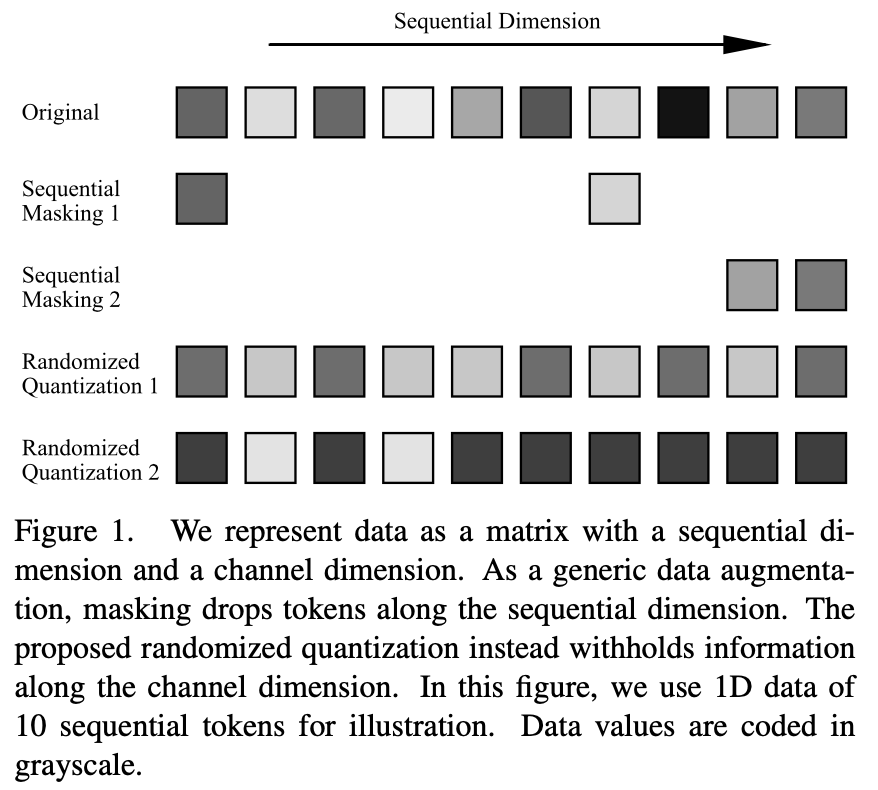
This method surpasses existing self-supervised learning methods in any modality in various data modalities, including natural images, 3D point clouds, speech, text, sensor data, medical images, etc. In a variety of pre-training learning tasks, such as contrastive learning (such as MoCo-v3) and self-distillation self-supervised learning (such as BYOL), features are learned that are better than existing methods. The method has also been validated for different backbone network structures such as CNN and Transformer.
Quantization refers to using a set of discrete numerical values to represent continuous data to facilitate efficient storage and operation of data. and transmission. However, the general goal of quantization operations is to compress data without losing accuracy, so the process is deterministic and designed to be as close as possible to the original data. This limits its strength as a means of enhancement and the data richness of its output.
This article proposes a randomized quantization operation, which independently divides each input channel data into multiple non-overlapping random intervals ( ), and maps the original input falling within each interval to a constant
), and maps the original input falling within each interval to a constant  randomly sampled from that interval.
randomly sampled from that interval.

The ability of random quantization as masking channel dimension data in self-supervised learning tasks depends on the design of the following three aspects: 1) Randomly divide numerical intervals ;2) Randomly sampled output values and 3) the number of divided numerical intervals.
Specifically, the random process brings richer samples, and the same data can generate different data samples every time a random quantification operation is performed. At the same time, the random process also brings greater enhancement to the original data. For example, large data intervals are randomly divided, or when the mapping point deviates from the median point of the interval, it can cause the original input and output to fall between the interval. greater differences between.
By appropriately reducing the number of divided intervals, the enhancement intensity can be easily increased. In this way, when applied to Siamese representation learning, the two network branches are able to receive input data with sufficient information differences, thereby constructing a strong learning signal and conducive to feature learning
The following figure visualizes the effects of different data modalities after using this data enhancement method:
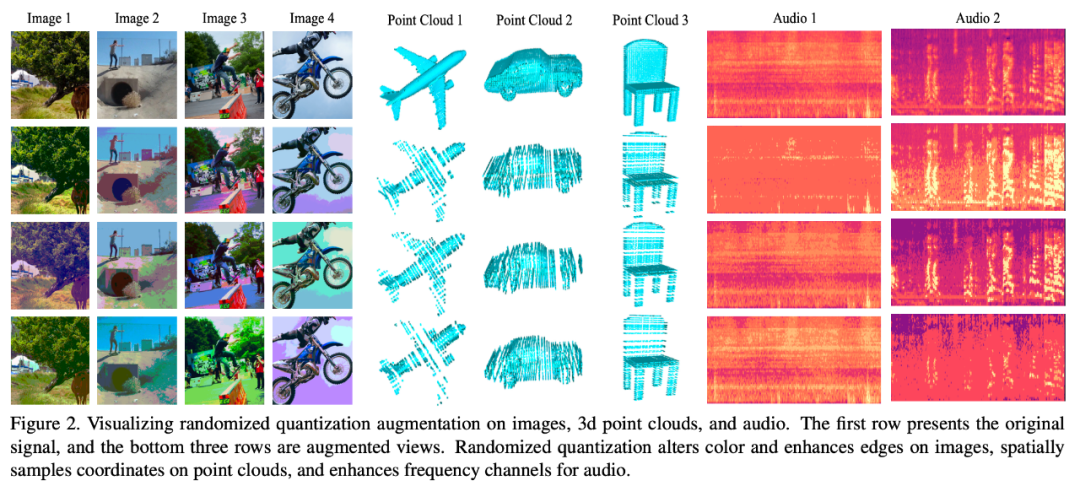
Rewritten content is: Mode 1: Image
This article evaluates randomized quantization applied to MoCo-v3 and The evaluation index for the effect of BYOL is linear evaluation. When used alone as the only data augmentation method, that is, the augmentation in this article is applied to the center crop of the original image, and when used in conjunction with the common random resized crop (RRC), this method has achieved better results than existing general self-supervised Study methods for better results.
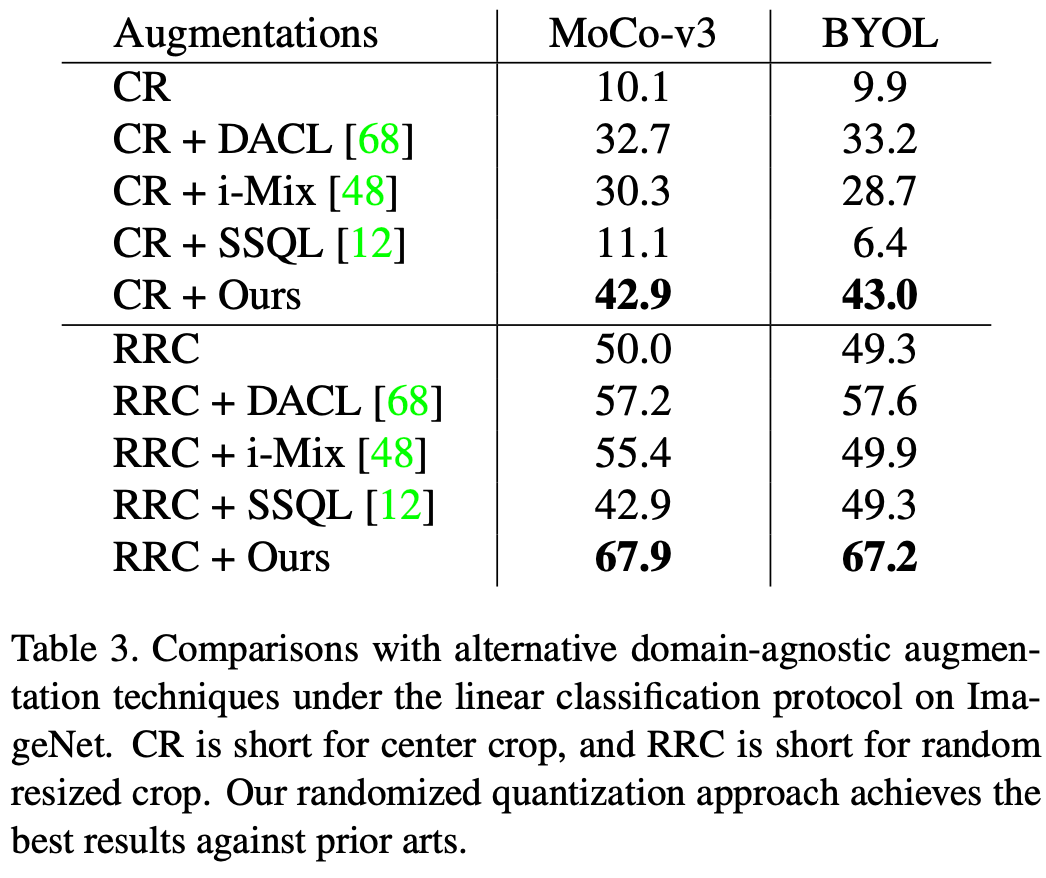
Compared with existing data enhancement methods developed for image data, such as color jittering (CJ), the method in this article has obvious performance Advantage. At the same time, this method can also replace a series of complex data enhancement methods (Full) in MoCo-v3/BYOL, including color jittering, random gray scale, random Gaussian blur, random Exposure (solarization), and achieve similar effects to complex data enhancement methods.
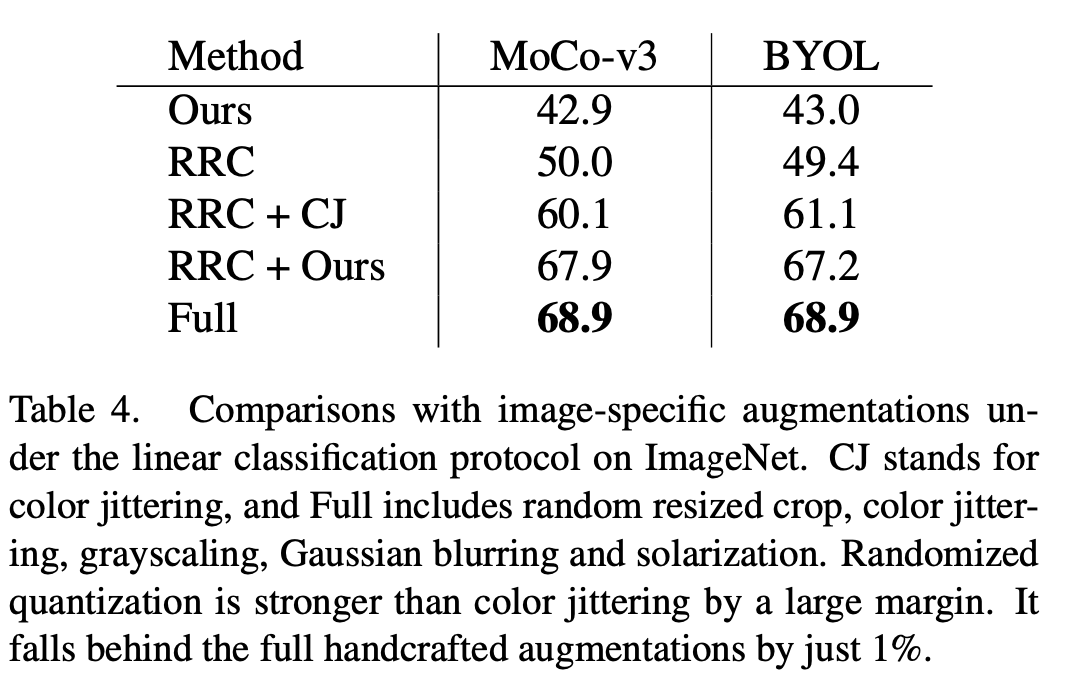
The content that needs to be rewritten is: Mode 2: 3D point cloud
In the classification task of the ModelNet40 dataset and the segmentation task of the ShapeNet Part dataset, this study verified the superiority of random quantization over existing self-supervised methods. Especially when the amount of data in the downstream training set is small, the method of this study significantly exceeds the existing point cloud self-supervised algorithm
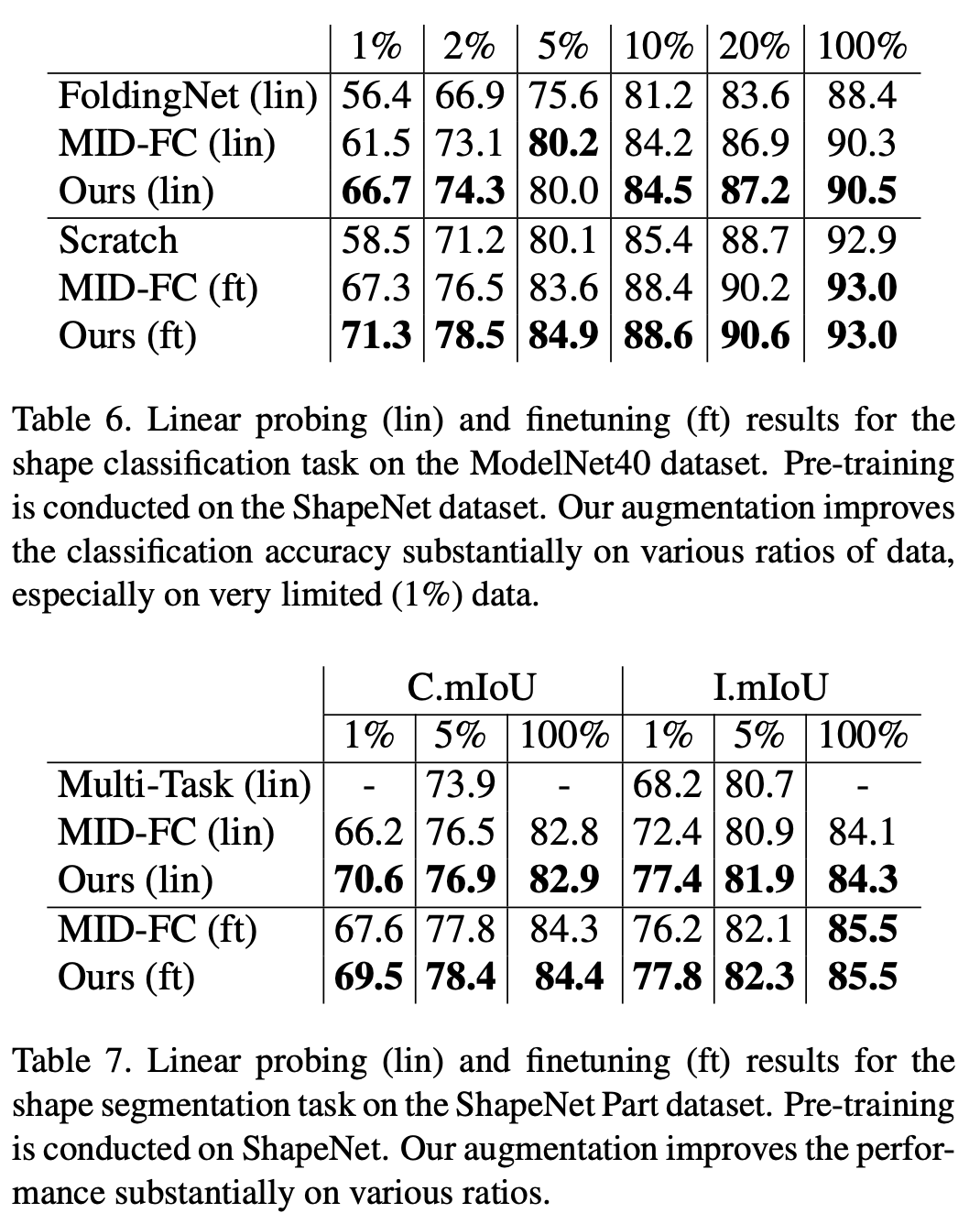
Rewritten content: The third mode: speech
On the speech data set, the method of this article has also achieved better results than existing methods. Better performance of supervised learning methods. This paper verifies the superiority of this method on six downstream data sets. Among them, on the most difficult data set VoxCeleb1 (which contains the largest number of categories and far exceeds the number of other data sets), this method has achieved significant performance improvement (5.6 points).

##The rewritten content is: Mode 4: DABS
DABS is a general self-supervised learning benchmark covering a variety of modal data, including natural images, text, speech, sensor data, medical images, graphics, etc. On various modal data covered by DABS, our method is also better than any existing modal self-supervised learning method

Interested readers can read the original paper to learn more about the research content
The above is the detailed content of Universal data enhancement technology, random quantization is suitable for any data modality. For more information, please follow other related articles on the PHP Chinese website!
 What skills are needed to work in the PHP industry?
What skills are needed to work in the PHP industry?
 Usage of typedef in c language
Usage of typedef in c language
 What is digital currency trading
What is digital currency trading
 myfreemp3
myfreemp3
 What should I do if my computer starts up and the screen shows a black screen with no signal?
What should I do if my computer starts up and the screen shows a black screen with no signal?
 Regular usage of grep
Regular usage of grep
 What are the enterprise erp systems?
What are the enterprise erp systems?
 What software do you use to open dat files?
What software do you use to open dat files?




